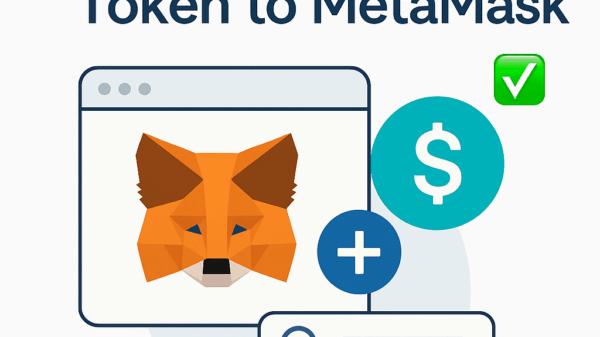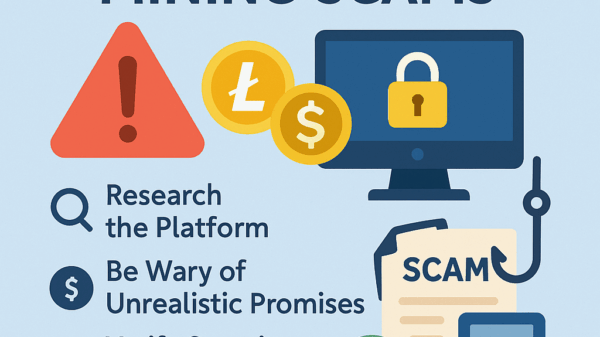How to Use a Hardware Wallet for Security
By Jason Miller – Crypto Writer 10.expert 🧠 Covering Bitcoin, altcoins, blockchain & Web3.
As a crypto writer and analyst, if you’re serious about securing your digital assets, especially for long-term holdings or significant sums, a hardware wallet isn’t just an option—it’s a necessity. Often referred to as “cold storage,” these physical devices offer the highest level of security by keeping your private keys completely offline, isolated from the vulnerabilities of internet-connected computers and smartphones.
In 2025, while software wallets have become more user-friendly and feature-rich, the fundamental security advantage of hardware wallets remains unchallenged. They act as a secure vault for your keys, allowing you to sign transactions without ever exposing your sensitive information to a potentially compromised environment. Mastering the use of a hardware wallet is a key step towards true financial sovereignty in the crypto space.
Let’s dive into how to use a hardware wallet for maximum security like a seasoned pro, transforming your crypto security posture.
How to Use a Hardware Wallet for Security: Your Ultimate Cold Storage Guide 🛡️🔑
A hardware wallet is the gold standard for crypto security. Learn how to set it up and use it effectively to protect your digital assets from online threats.
Purchase from an Official Source ONLY 🛒
- Critical First Step: Always buy your hardware wallet directly from the manufacturer’s official website (e.g.,
ledger.com,trezor.io). - Avoid Resellers/Used Devices: Never buy from third-party resellers (Amazon, eBay, etc.) or used devices. There’s a risk of tampering or pre-configuration by malicious actors.
- Inspect Packaging: Upon arrival, meticulously inspect the packaging for any signs of tampering (broken seals, signs of opening, missing components).
Initial Setup: Generate a New Wallet 🆕
- “Set up as new device”: When you first power on your hardware wallet, always choose the option to “Set up as new device” (or similar phrasing). Never choose “Restore wallet” unless you are intentionally recovering a pre-existing wallet.
- Create a PIN: You will be prompted to set a PIN code. Choose a strong, unique PIN (typically 4-8 digits, though some allow more). Avoid easily guessable numbers like birthdays or
1234. This PIN protects your device if it falls into the wrong hands.
Secure Your Secret Recovery Phrase (Seed Phrase) – THE CORE OF SECURITY! 🤫📝

- Offline Generation: Your hardware wallet will generate a 12 or 24-word seed phrase (also known as a recovery phrase or mnemonic). This phrase is generated offline on the device itself and never exposed to the internet.
- Write It Down (Physically): Carefully and accurately write down each word in the exact order on the provided recovery sheets.
- Multiple Copies, Secure Locations: Make at least two physical copies and store them in separate, secure, and geographically dispersed locations (e.g., fireproof safe, bank safe deposit box).
- NEVER Digital: DO NOT take photos, type, or store your seed phrase digitally in any form (computer, phone, cloud, email, password manager). This defeats the purpose of cold storage.
Verify Your Seed Phrase (Optional but Recommended) 🧪
- Recovery Check: Many hardware wallets offer a “recovery check” or “seed phrase verification” feature. This allows you to re-enter your seed phrase onto the device itself to confirm you’ve written it down correctly without exposing it to your computer.
- Simulated Restore (Advanced): For critical security, you can perform a full restore on a separate, wiped, offline device to ensure your backup works. (This is for advanced users and requires extreme caution).
Install Necessary Apps (Firmware & Crypto-Specific) ⚙️
- Companion Software: Download the official companion software (e.g., Ledger Live for Ledger, Trezor Suite for Trezor) directly from the manufacturer’s website.
- Firmware Updates: Always keep your hardware wallet’s firmware updated. Firmware updates often include critical security patches and new features. Only update through the official companion software, following the manufacturer’s instructions precisely.
- Crypto Apps: Install the specific cryptocurrency apps onto your device for the coins you wish to manage (e.g., Bitcoin app, Ethereum app). These apps allow the hardware wallet to communicate with those blockchains.
Connect to Your Computer/Phone and Generate Addresses 🌐
- Physical Connection: Connect your hardware wallet to your computer via USB (or Bluetooth for some models like Ledger Nano X, but use USB for maximum security).
- Generate Receiving Addresses: Use the companion software to generate a receiving address for the crypto you want to receive.
- VERIFY ON DEVICE SCREEN: Always, always, ALWAYS verify the receiving address displayed on your computer screen against the address shown on your hardware wallet’s physical screen. If they don’t match, disconnect immediately – your computer may be compromised.
Receiving Crypto: The Secure Way ✅
- Share Verified Address: Share the hardware wallet’s verified public receiving address with the sender.
- Confirm Network: Ensure the sender is sending on the correct blockchain network that your hardware wallet (and the specific app installed on it) supports.
Sending Crypto: The Power of Offline Signing ✍️
- Initiate on Companion Software: Initiate the transaction (specify recipient address, amount) on your computer using the hardware wallet’s companion software or a connected hot wallet (like MetaMask).
- REVIEW ON DEVICE SCREEN: When prompted, meticulously review all transaction details (recipient address, amount, fees) on your hardware wallet’s small physical screen. This is crucial. Even if your computer is infected with malware that alters the details on your screen, the hardware wallet’s isolated display shows the true transaction you are about to sign.
- Confirm on Device: Only after verifying all details are correct on the hardware wallet’s screen, physically confirm the transaction on the device itself (by pressing buttons). This action “signs” the transaction offline using your private keys, which never leave the device.
Add an Optional Passphrase (25th Word) for Advanced Security 🔐➕
- Hidden Wallet: Most hardware wallets allow you to set an optional passphrase (often called a 25th word). This creates a “hidden” wallet accessible only with your main 12/24-word seed phrase plus this additional passphrase.
- Extreme Protection: If someone gains access to your main seed phrase, they still cannot access your funds without the passphrase. It provides plausible deniability.
- Store Separately: If you use a passphrase, NEVER store it with your main seed phrase. Memorizing it is ideal, or secure it in a completely different, equally robust manner.
Disconnect When Not in Use 🔌
- Reduce Exposure: Once you’ve completed your transactions, disconnect your hardware wallet from your computer. This keeps it offline and reduces its exposure to potential threats.
Store Your Hardware Wallet Securely 🔒
- Physical Security: Treat your hardware wallet like cash or jewelry. Store it in a secure place (e.g., home safe, locked drawer).
- Separate from Seed Phrase: Always store your hardware wallet in a different location than your seed phrase backups. If one is compromised, the other remains safe.
Use Strong PINs and Passwords 💪
- Device PIN: A strong PIN prevents unauthorized access if your physical device is lost or stolen. Most devices wipe after a few incorrect PIN attempts.
- Companion Software Password: Use a strong, unique password for the companion software (e.g., Ledger Live, Trezor Suite).
Beware of Supply Chain Attacks 🏭
- Buy Direct: Reiterate the importance of buying directly from the manufacturer. Organized criminals sometimes attempt to intercept hardware wallets in transit, tampering with them to compromise funds later.
Integrate with Software Wallets (MetaMask) 🤝
- Enhanced Hot Wallet Security: You can connect your hardware wallet to popular software wallets like MetaMask. This allows you to interact with dApps while still having your transactions signed by the hardware wallet, keeping your private keys secure.
- Still Verify on Device: Even when using a hardware wallet with MetaMask, always confirm the transaction details on the hardware wallet’s screen before approving.
Regularly Check for Firmware Updates 🔄
- Security & Features: Periodically visit the manufacturer’s official website or use their companion app to check for firmware updates. These updates often patch vulnerabilities or add support for new cryptocurrencies.
- Follow Instructions: Always follow the manufacturer’s update instructions precisely.
Practice Safe Computing Habits 💻
- Clean PC: Ensure the computer you connect your hardware wallet to is free from malware, viruses, and keyloggers.
- Secure Internet: Avoid using public Wi-Fi for sensitive transactions. Use a trusted, private network or a VPN.
Don’t Use a Pre-Configured Device 🚫
- Alarm Bell: If you receive a hardware wallet that already has a PIN set or a seed phrase provided (not generated by you), it’s compromised. Do NOT use it. Contact the manufacturer immediately.
By diligently following these steps, your hardware wallet becomes an impenetrable fortress for your crypto, offering you peace of mind and true ownership in the ever-evolving world of digital assets.








